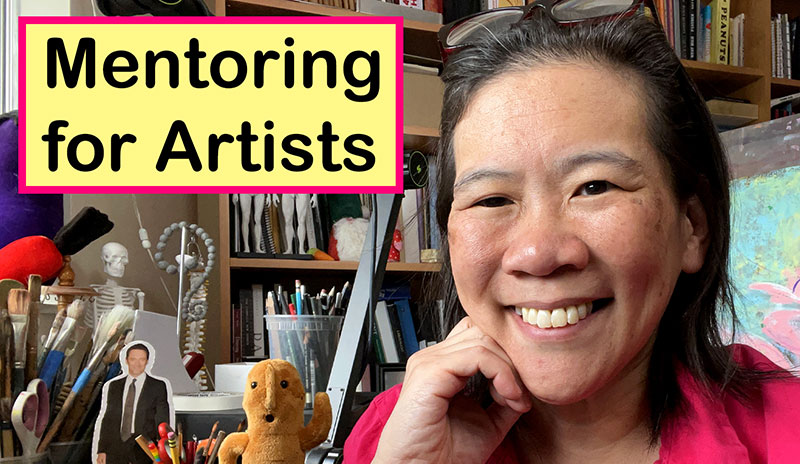This video explains how lighting can be used in paintings to show form in a portrait.
- Watch the 6 min. version
- Watch the 63 min. version
You’ll see how to break down the specifics of light and shadow: direct light, reflected light, shadow core, types of shadows, how light effects color.
Lighting can establish a mood or narrative for a painting, and more. Lecture by Art Prof Clara Lieu.

Video Walkthrough
- Lighting is important not just for the visual effects, but especially for establishing mood.
- Lighting can dramatically change the mood for a scene, anything from romantic, scary, to happy.
- Candle light can be very beautiful and intimate, as seen in Georges de la Tour‘s paintings.
- Light in a painting is effective if you can figure out which direction the light is coming from.
- The key to painting light is consistency, the highlights and shadows all have to be doing the same thing.
- Usually 1 light source is the most effective as it is concentrated in a specific part of the scene.
- Multiple light sources can be really tough to deal with, often the light sources will “cancel” each other out and can make a portrait look very flat!
- It is possible to have a portrait with 2 light sources, usually there has to be a very strong shadow core, and it helps if the 2 highlights are very different from each other.
- Ask whether you want the light source (a lamp, a window) to be in your painting, often it can play a role in the narrative!
- Caravaggio‘s Calling of St. Matthew is a great example where the light is part of the narrative.
- Lighting your portrait from above can often result in “raccoon eyes” which can provide a very dramatic result.
- Fluorescent light usually has a very sterile, cool quality and often makes forms appear very flat.
- Daylight is usually very bright with high contrast highlights and shadows.
- Cast shadows are often very graphic, crisp, and flat.
- Cast shadows follow the forms that they fall on.
- Reflected light can be hard to see, you really have to search for it!
- Edward Hopper‘s paintings show very simple, clear cast shadows that are great to observe.
- Natural light usually has cool highlights and warm shadows.
- Artificial light is the opposite: it has warm highlights with cool shadows.
- Take the initiative to set up your own lighting situations!
- You can control the type of light, the position of the light, the ratio of highlights to shadows, and more.
Prof Lieu’s Tips

The way I look at portraits (or any artwork for that matter) is I ask myself when I’m looking at the portrait, is there anything that is sticking out to me?

Does that part get in the way of me appreciating the other parts, and/or the intention behind the piece?
Films mentioned
Artists mentioned
- Caravaggio
- Jean-Honoré Fragonard
- Georges de la Tour
- John Singer Sargent
- Johannes Vermeer
- Sir Lawrence Alma-Tadema
- Edward Hopper
- Diego Velázquez
- Anders Zorn

Artworks mentioned
- The Martyrdom of Saint Matthew, Caravaggio
- The Calling of Saint Matthew, Caravaggio
- El Jaleo, John Singer Sargent
- Officer and Laughing Girl, Johannes Vermeer
As a free educational source, Art Prof uses Amazon affiliate links (found in this page) to help pay the bills. This means, Art Prof earns from qualifying purchases.


